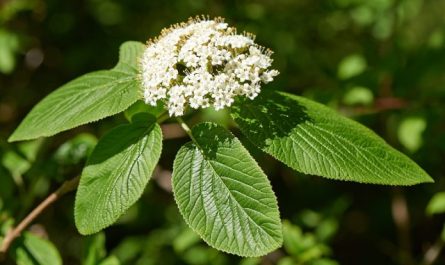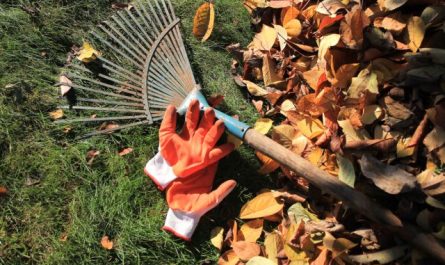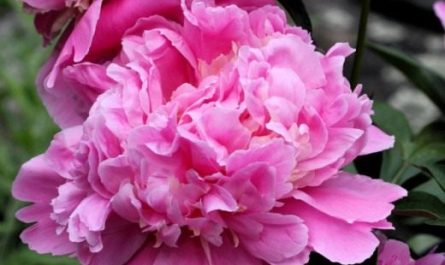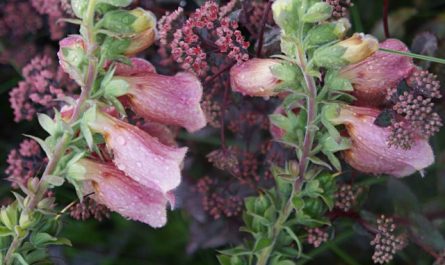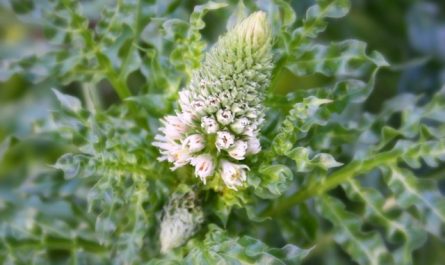For some time I was sure that sweet potatoes had no competitors in terms of versatility of use. Of course – large tasty tubers, decorative foliage, edible tops, pretty flowers. In addition, some varieties can be grown as decorative foliage indoor plants. Or container plants. Growing anredera somewhat shook my confidence: it also has edible leaves and tubers (although the latter are incomparably fewer than sweet potatoes), in addition, it weaves well, and its inflorescences are delicate, lacy and fragrant. It turns out that there is also apios americana, also with a very wide range of uses. This is what we will talk about.

What is the American apios like?
Apios americana (american celery) is also called differently tuberous wisteria, potato beans, potato beans, American Peanut, peanut, hopniss, Indian Potatoes or cinnamon. Most of these names, as usual, have nothing to do with the matter.
Apios is a legume of North American origin. That is, it is not related to potatoes as peas are to tomatoes. Peanuts are a little closer to it in the family, but are completely different in the way they form underground products: apios does not “push” its pods into the ground; its tubers form on the roots. The tubers also have nothing to do with nuts. Except, perhaps, for their dimensions – they are about the size of a walnut, if large, and a hazelnut, if small.
The plant resembles wisteria, a relative of the family, in its pinnate leaves and inflorescence structure. However, unlike wisteria, apiosa inflorescences stick up, slightly bending, and the length does not exceed 15 cm.
Why “cinnamon” – I still don’t understand, although I honestly sniffed the whole plant. Neither the tubers, nor the stems, nor the flowers smell like cinnamon. The flowers have an interesting, unusual smell, I don’t even know what to compare it to. Some sources compare it to the smell of wisteria, I can’t confirm, because I haven’t smelled wisteria for a long time, I’ve already forgotten.
American Indians have long used apiosa tubers as food, and, one must assume, they were engaged in selection, isolating plants with large tubers. In the 80s and 90s of the last century, a lot of work was done at Louisiana State University to collect a collection of both wild samples of the plant and those used by the Indians, more than two hundred in total. Experiments on hybridization and selection were carried out for about ten years, and several highly productive forms were obtained. It seems even with tubers up to 20 cm in size and a yield of up to 1.5 kg per bush. But then, as often happens, the funding for the project ended. It never came to introducing it into culture.
That is, it didn’t reach America, but it did reach Japan and South Korea remarkably well, where apios is valued for the high protein content in its tubers, as well as for the presence of substances used in the fight against cancer.
However, today the collection in the USA has been almost restored and research has resumed. Apparently, the funding situation has improved.

My experiments
As a source material, I had a “chain” of four bead-shaped tubers. The region is Kuban, the foothills of the Caucasus. I couldn’t wait to plant the tubers in March, but I was afraid of the return frosts, which this spring turned out to be very generous with (all the color on the fruit trees was lost). Therefore, two larger tubers were planted in flower pots by the beginning of April, and two small ones – in a high bed, closely adjacent to the southern side of the shed.
And I was absolutely in vain afraid that the sprouts would be damaged by frost! The first sprouts appeared almost a month and a half after planting. It turns out that this is normal for them – germination in 6-7 weeks. I planted the plants from the pots on May 20 (in different conditions).
Planted directly into a bed – southern orientation, high dry bed, white wall on the north side, relatively loose soil from rotted mulch.
One plant from a pot is planted on an eastern-facing slope near a dead young apricot (the dry trunk was left for the liana to support) in loose neutral soil that was prepared for the apricot. The place is a bit dry. But the hole is dug in clay soil that retains moisture well.
The second plant from the pot – on the western side of the house, near the canopy, in moist, slightly acidic soil. Heavy, clayey, uncultivated.
The results are completely different. The plant near the shed was the first to grow three-meter vines and bloom at the end of July (I watered it, it was very dry there), it was the first to bloom and the stems dried up in September. Conditions: direct sun 5-6 hours a day, heat, dryness.
The apios under the apricot was in no hurry, it was growing green mass, it entwined the provided trunk, it caught on the shoots that had unexpectedly grown on the apricot and it started to bloom at the end of August. At the end of October the stems dried up. Conditions: direct morning sun for 3-4 hours, hot but not dry. I watered it twice, at the beginning of growth.
The one growing near the canopy “swayed” longer than all, but showed itself in all its glory: it grew to the roof of the canopy (3,5 m) in August, grew more green mass than all the others, bloomed in mid-September and is still blooming (end of October). Conditions: direct evening sun 2-3 hours a day, moist clay soil, a windy place. A drop in temperature to +3 degrees did not affect it in any way, it continues to bloom and the greenery is quite green.
None of the plants produced seeds, but that’s not surprising: this species is often triploid and does not form seeds. For selection and obtaining edible seeds, you need to look for diploid plants. Mine, all three are from the same chain of tubers, the chances of getting pods are zero.


How to use apios?
Here comes the most interesting part. The first thing that suggests itself is its use in ornamental gardening, the abundance of greenery and flowers is very good. The stems are thin with numerous branches, tightly intertwining the support. I have never had any diseases without treatment, and no one has eaten it. Maybe because they are not used to it. Fungi also did not touch it, although in our valley the temperature differences between day and night are quite significant (15-20 degrees), and, accordingly, there are abundant fogs with dew.
Apios tubers overwinter in the middle zone. I will leave the plant that blooms to overwinter. Our winters are wet, the maximum precipitation falls during this period, and mainly in the form of rain. Clay soil holds moisture well, let’s see what happens in wet and cold soil.
The tubers not only overwinter in the ground, but also grow well over two-three year growing cycles, so that after three years of cultivation, the bonus to the overgrown vine will be a harvest of tubers sufficient to taste.
I dug up the tubers of the first two plants. The planted tubers themselves grew about one and a half times, and in addition to them, chains of 3-4 new, smaller ones grew. Maybe there is still something left in the ground, it will be discovered in the spring. I gave one chain to my experimental friends, and peeled, cut and dried the tubers from the second chain to add to sauces – there was nothing special to cook or fry there.
The tubers secrete a sticky white milk when cleaned and cut. The pulp is very white and does not change color when cut or dried.
To use apios as a food plant, you need to look for varieties of this particular direction. The tuber bonuses from apios, which is widespread in Russia, will be enough only as an exotic addition to dishes.
The tubers can be boiled, fried, baked. But the best option is to dry, grind and add to baked goods and sauces. In Japan and Korea, this powder is added to gluten-free baked goods, noodles and even sausage.
The tubers contain a high content of protein, iron and calcium, there are compounds used to normalize cardiac activity, in the treatment of cancer, obesity and diabetes. And recently, anti-inflammatory substances have been discovered, both in the tubers and in the leaves.
By the way, the tubers contain phytohormones that normalize hormonal levels, and due to the combination with high protein, calcium and iron content, they are very useful for women in the postpartum period. That is, the use of apios as a medicinal plant is completely justified.
To get the maximum effect from the plant, it would be nice to find a diploid plant that also produces pods. The seeds of the apios are edible and rich in protein, just like those of most legumes.

How to grow apios?
Apios is good because it can be grown practically anywhere in Russia where there are gardeners and gardening. In a moderate and warm climate, it will overwinter completely independently, and in the continental part, the tubers can be dug up in the fall and stored until spring, like potatoes. They will not take up much space. In the spring, plant in pots for germination (they germinate in a month and a half in the soil, in the warmth it will be faster). Even in the middle zone, you can dig up several tubers and germinate in pots for earlier growth of greenery and flowering.
In its native North American conditions, apios lives in damp and swampy lands, so it is logical to plant it not in dry places or to provide regular watering. It prefers acidic soil, “out of habit”. That is, neutral soil is also quite suitable for it, but it is better to have slightly acidic soil.
The liana does not particularly need a lot of sun, 3-4 hours in the middle zone is quite enough. In sunny continental regions, 2 hours will be enough. In all cases, eastern and southeastern orientation is preferable, and then – as it turns out.
According to the information, its roots go to a depth of up to a meter, but this is with long-term cultivation on loose soil. Annual tubers are located in a 15-20-centimeter layer.
The plant needs something to cling to. The stems of the apios are annual, thin, and twine around the support. The total leaf mass is not particularly heavy and serious support structures are not required. A plastic net or simply stretched twine will easily withstand the load of the plant.
It does not require additional feeding, like any legume, it feeds itself with nitrogen, and can also feed its neighbors. It will be grateful for mulching with grass.
In general, there is nothing complicated about growing apios, but it is a lot of fun!
